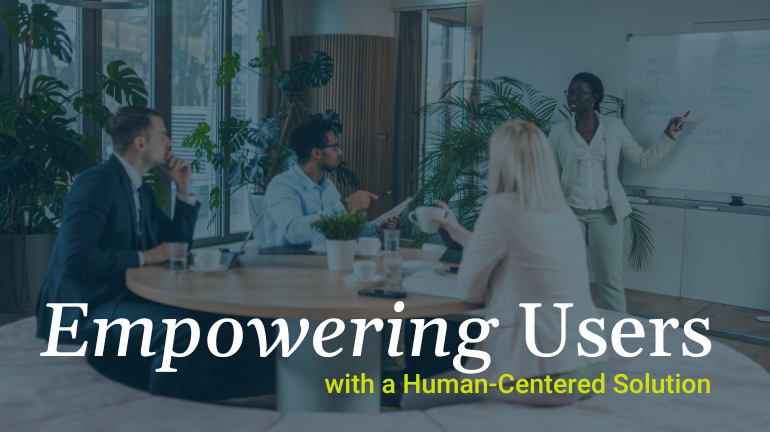Creating a Human-Centered Solution
At Evans Consulting, we believe in the power of creating solutions to business and technology problems by focusing on the human element. But what does this mean? Conceptually, this means an acknowledgement that all aspects of a business – its strategy, processes, structure, roles, and incentives – are connected by one key facet. Its people. More tactically, though, how can this be realized in working on a particular project? Today I want to discuss how it can mean understanding the right balance of what the customer wants, what the problem demands, and what the culture can tolerate.
What the Customer Wants
No two leaders approach the same problem in the same way. Some are visionaries – they see and can clearly describe the solution very quickly, able to articulate a clear roadmap of where the team needs to go to help them see the path to get there. Others are analyzers or arrangers – they can decompose the problem, needing time to process the relevant information, inputs, alternatives, and assumptions before arriving at an approach they believe will yield positive results. Still others are mobilizers – driving the momentum of their people to work the solution. To be successful in our work, I believe we have to understand and tailor our approach based on the unique strengths each client possesses. Phrases such as creating ‘buy-in’ or ‘executive sponsorship’ are really a way of highlighting the need to describe a problem in a clear, concise manner that the person ultimately accountable for resolving it can clearly understand and attach themselves to. It means helping them to really ‘believe it’ so they can help solve it.
What the Problem Demands
Each business problem can be viewed through an engineering lens to understand the nuts and bolts of what’s happening. We ask questions and develop models to analyze the inputs, processes, outputs, customers, suppliers, policies, organizational mandates, and enabling information technology solutions within an organization. This provides a blueprint for understanding the mechanics of how the work gets done. Based on this understanding, we leverage best-practices, lessons-learned, industry standards, and our own methodologies to develop measureable, sustainable solutions.
What the Culture Can Tolerate
How do you assess, and then plan for change based on, an organization’s culture? A culture of change can be assessed many ways. We like to examine cultural predictors such as leadership’s awareness of the need for change, presence (or absence) of a collective focus on improving outcomes, personnel’s willingness to discard best-practices, incentives in place to further continuous learning, and availability of resources to engage the talent development of the workforce at all levels. Some clients can tolerate fast-paced, multi-faceted implementation approaches with multiple projects driving changes in different parts of the organization in parallel. Other clients require a more measured, low-risk approach with a series of projects that change one after the other.
Human Centered-Change that Works
Effectively driving change that lasts at any organization requires a careful balance of these three (often competing) values. Over-attention paid to any one puts the others, and ultimately the success of the work, at risk.



